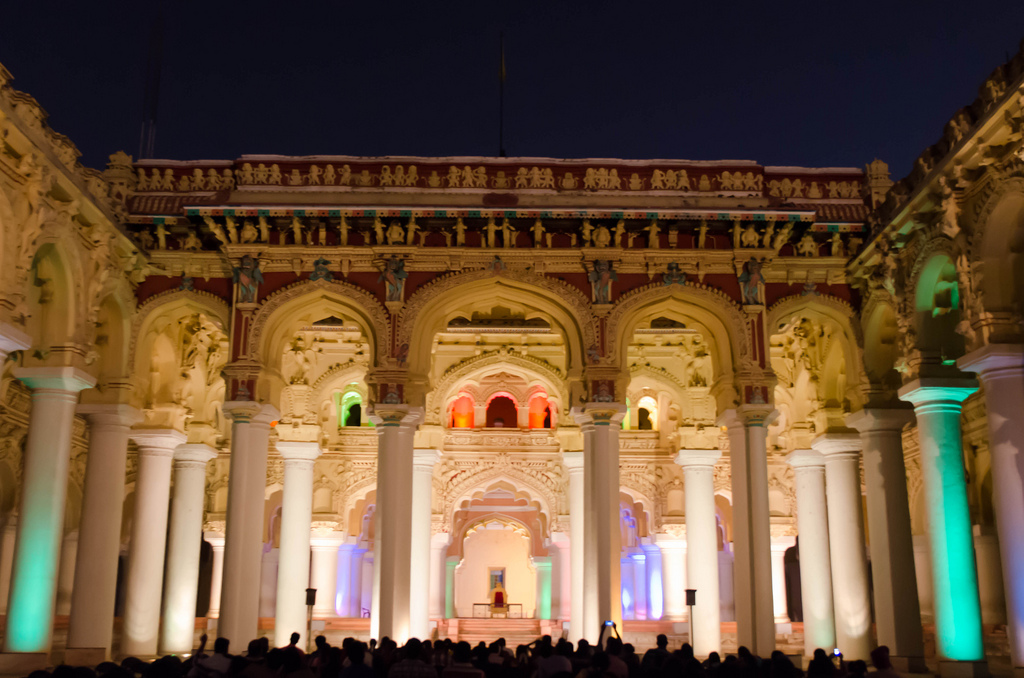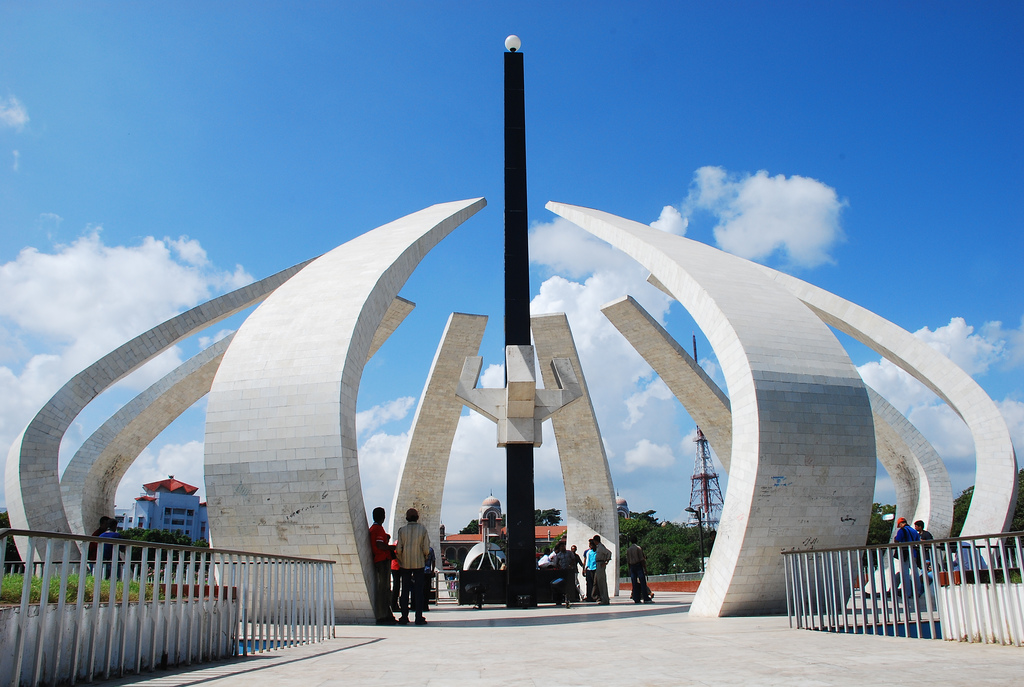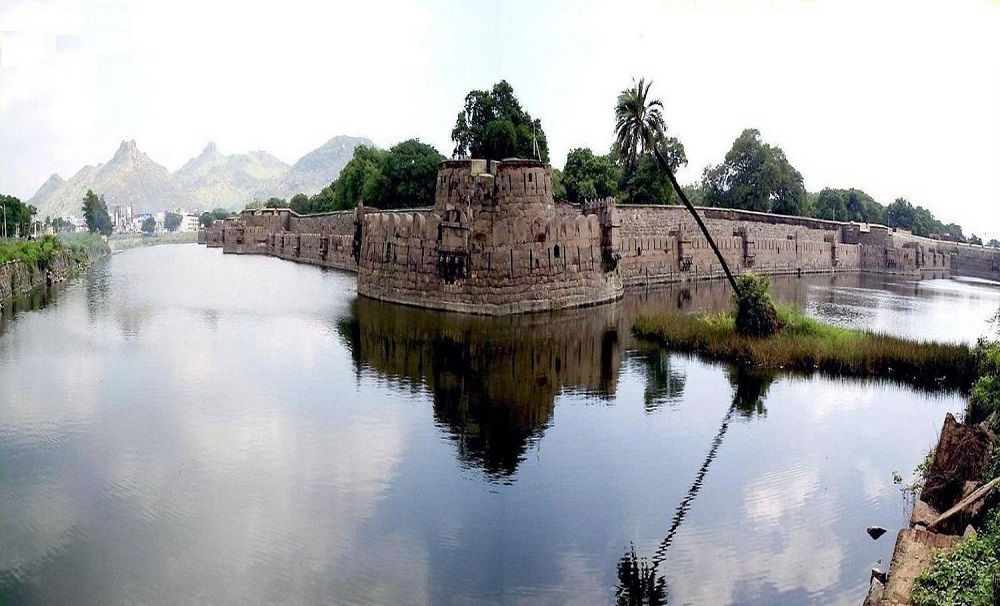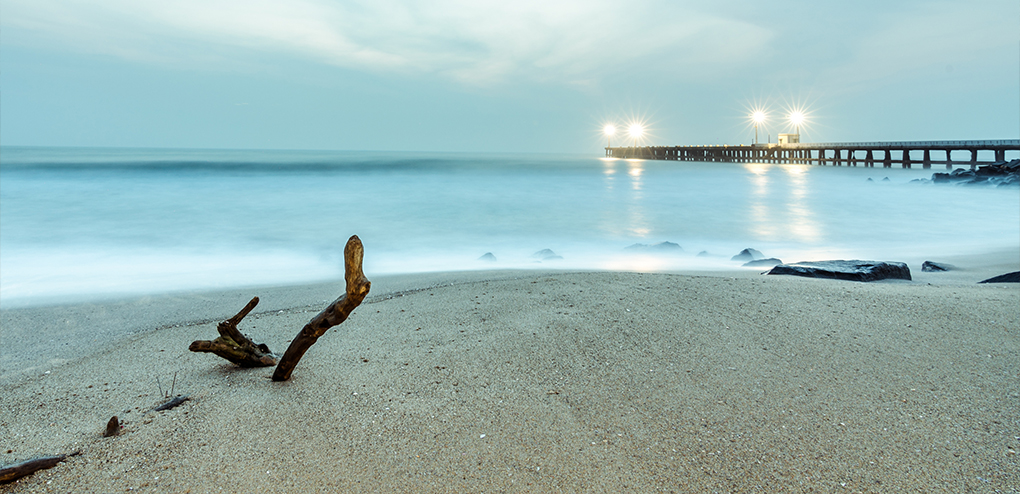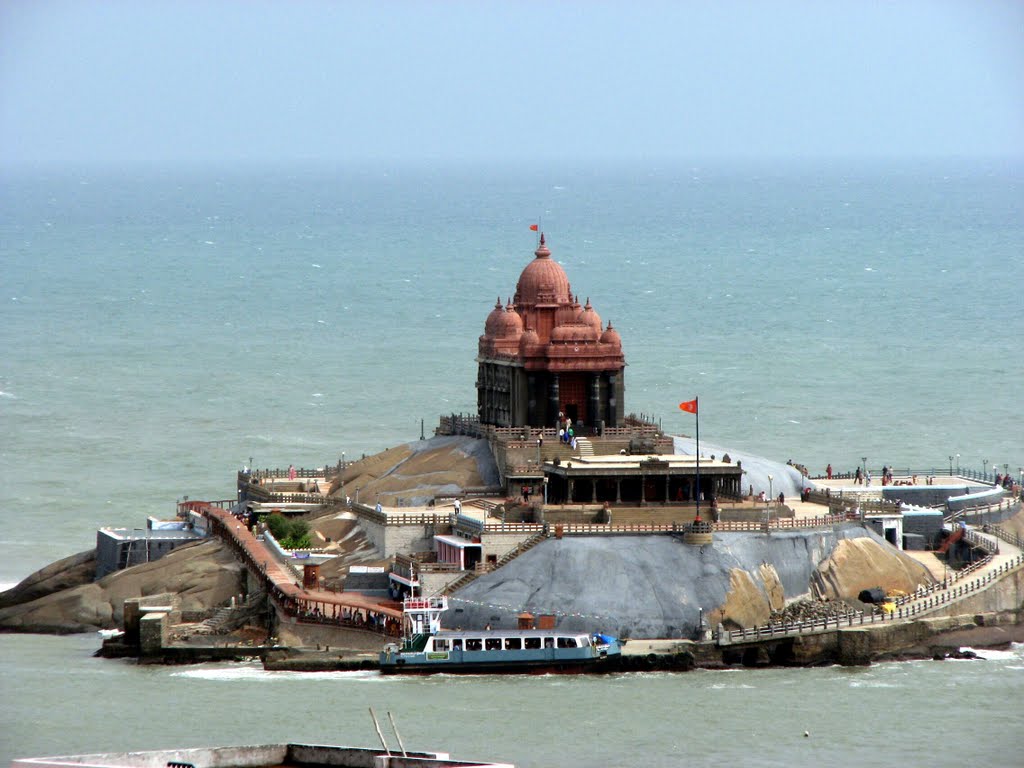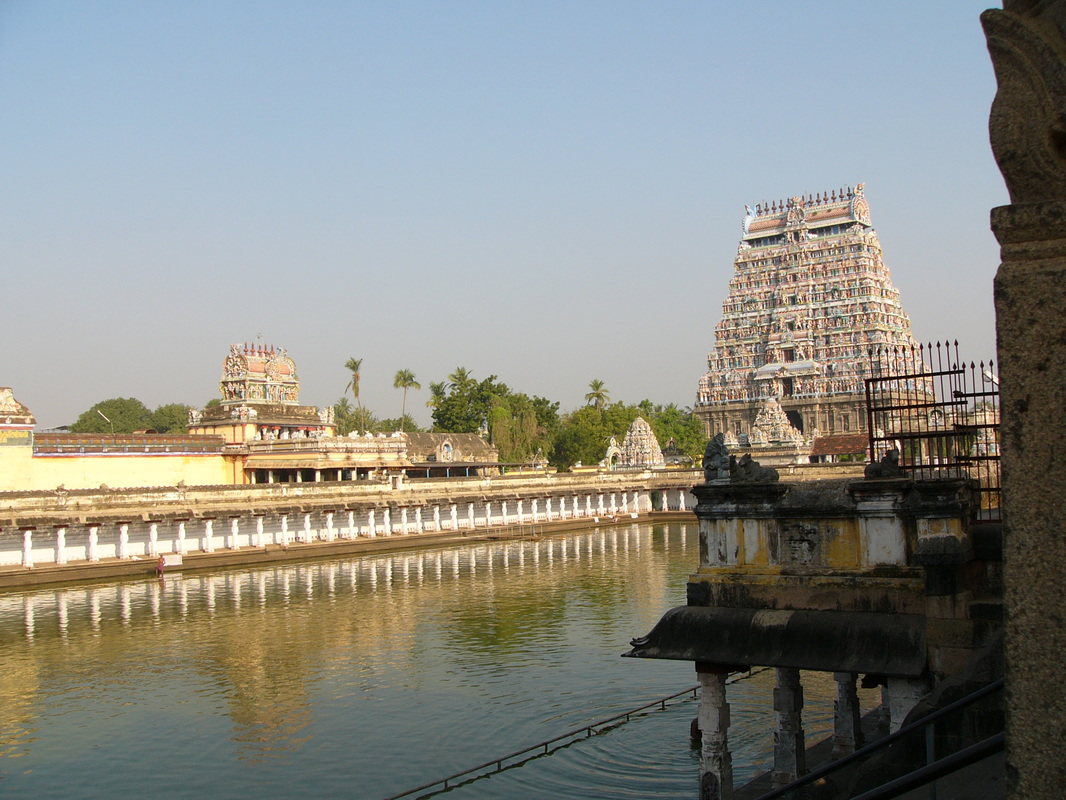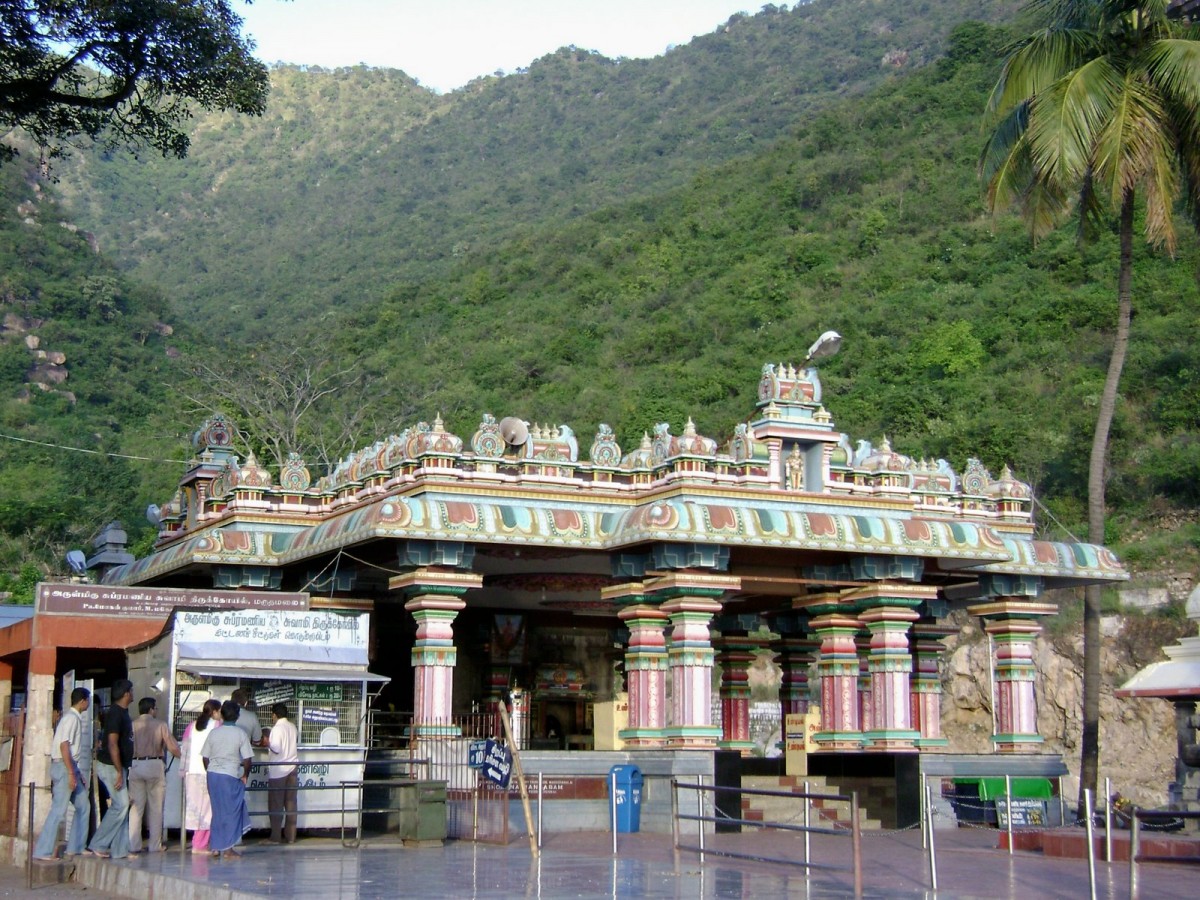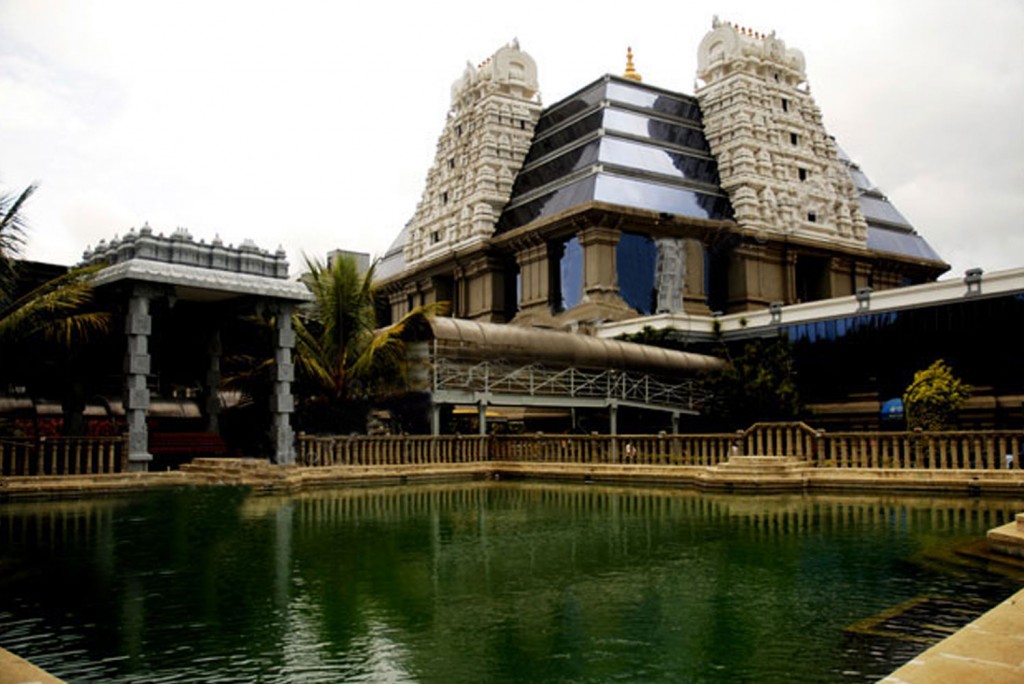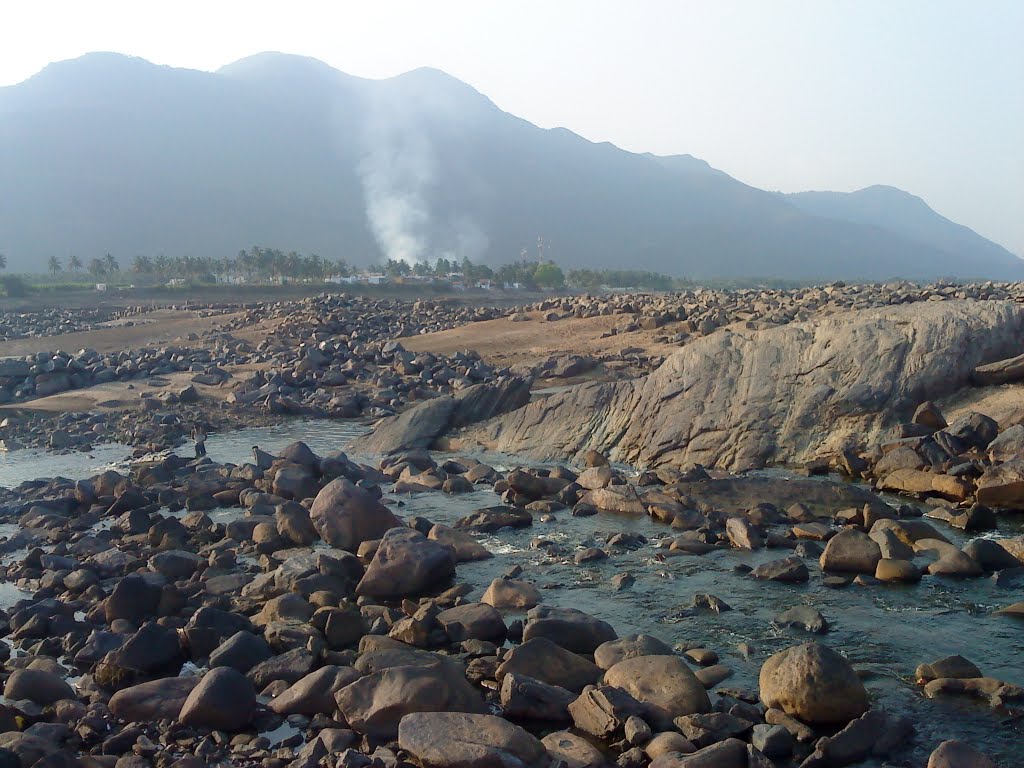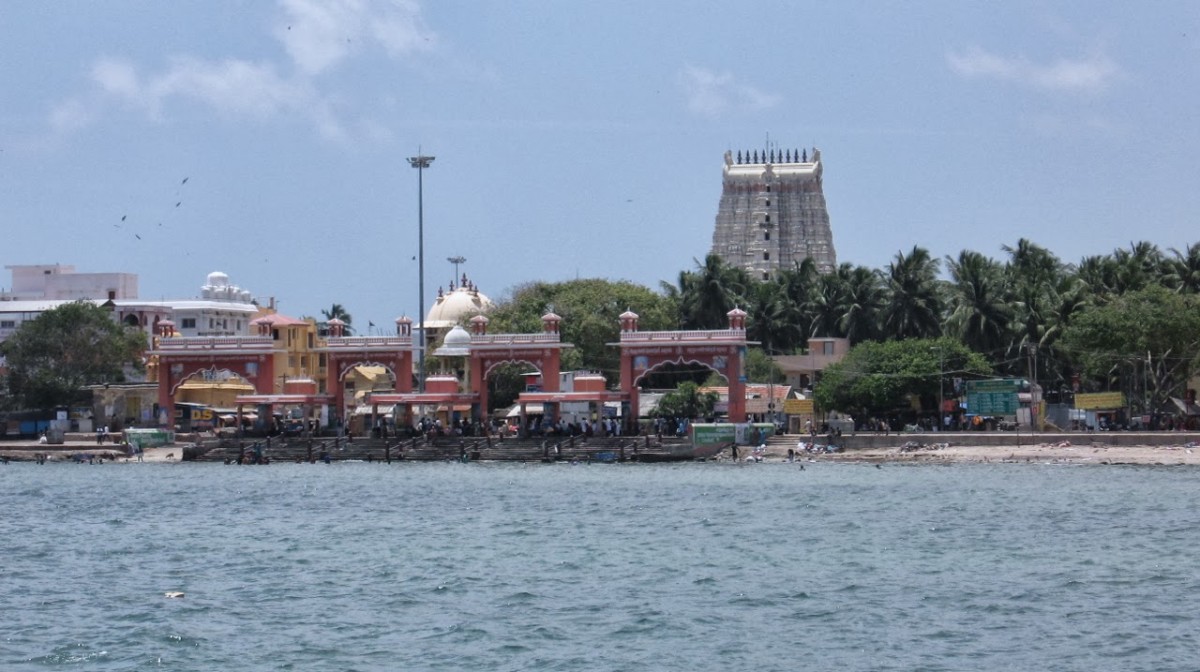
Rameswaram Tourism and Travel Guide
History
Sri Ramanathaswamy temple is situated close to the sea on the eastern side of the island, which is in the shape of a conch. The island is connected with the main land at Mandapam by an awe-inspiring rail bridge and a road bridge. InRameswaram ancient days, the shrine was only a thatched hut. Over the centuries, the small shrine was gradually developed into what it stands today as a massive and magnificent structure.
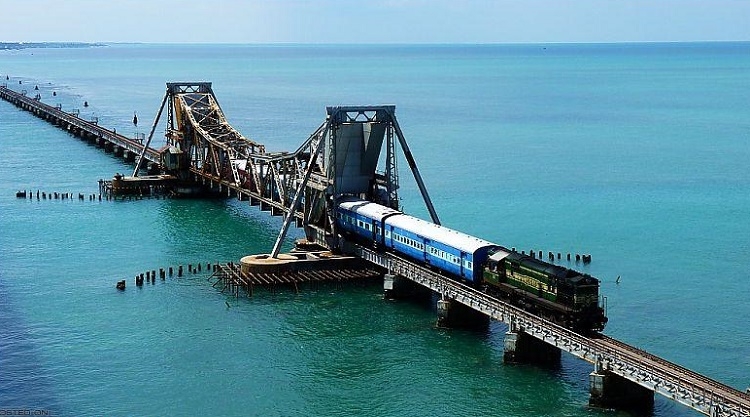
Different dynasties were ruling the Ramanathapuram region in different periods. Pandya Kings were ruling up to the 15 century. Later, the region came under the reign of Nayaks of the Vijayanagar empire, who ruled till around the 1 7 century. Then the Sethupathis, who were the earliest chieftains of the region, came to power. They lavished their funds for art and architecture of the Rameswaram shrine. Notable among them were Udayan Sethupathy, Thirumalai Sethupathy, Raghunatha Sethupathy and Muthuramalinga Sethupathy, whose statues are housed in the temple.
Mythology
The temple of Lord Ramanathaswamy dates back to the period of Ramayana. The epic begins with the birth of the four princes in Ayodhya, but its subsequent scenes change in quick succession from the banks of the Sarayu River to this southernmost part of our land – the confluence of Mahodathi and Ratnakara. In Rameswaram, one can capture glimpses of scenes from Sundara Kaandam, the epic’s fifth canto, unfolding.
Sri Rama, the Prince of Ayodhya, is an embodiment of love, virtue and Dharma. He undergoes a 14-year-long exile on the eve of his coronation to fulfill a promise of his father Dasharata. His wife Sita and his most caring brother Lakshmana accompany him to the forest. In his quest for Dharma, Rama vanquishes thousands of Rakshasas in the forests during the exile and brings peace and happiness among the Rishis and other inhabitants.
The exile passes off peacefully till the abduction of Sita by Ravana, the Asura king of Lanka, at Panchavati on the banks of Godavari. Rama is grief-stricken. He along with Lakshmana wanders through the forests in search of Sita. One day they meet Sugriva, an exiled monkey king from Kishkindha, and Hanuman, his minister, who vow to help Rama trace Sita. After regaining his kingdom, Sugriva dispatches search parties in all directions. Hanuman, Angada, Nala and others travel southwards and land on the Gandhamadhana Parvatha along the south-eastern coast. This is the present Rameswaram.
The famous Sundara Kaandam begins here with the unbelievable act of Hanuman taking Vishwa Roopam and leaping across the ocean from this hill to reach Lanka. After a frenzied search, Hanuman finally succeeds in locating Sita, held captive in Ravana’s Ashoka Vana. He hands over to Sita a ring from Rama as proof of his being Rama’s Rameswarammessenger. Assuring Sita that Rama will come soon, wage a battle against Ravana and end her agony, Hanuman takes leave of Sita after accepting with reverence her Choodamani (head ornament) as a token for Rama. Later Hanuman destroys Ashoka Vana and gets himself captured by Ravana’s son Indrajit. When Ravana orders setting fire to the tail of Hanuman, he sets the whole of Lanka ablaze with his burning tail.
Hanuman takes the air route back to Gandhamadhana Parvatha, where the search party has set up camp. They all rejoice the glad tidings. Soon they reach Kishkindha. Hanuman meets Rama and gives him the Choodamani with the news that Sita is safe. Rama is immensely pleased with Hanuman and embraces him warmly. Sugriva organizes a big retinue of monkeys and bears from all over the land to proceed on the mission to rescue Sita. Headed by Rama and Lakshmana, they traverse the eastern coast.
Following tradition, Rama first invokes Lord Vinayaka (Veyil Ugandha Vinayaka) at Uppoor seeking to remove obstacles on his mission. He offers puja to Navagrahas at the present Devipattinam or Navapaashaanam by installing nine stones in the sea. He then reaches a marshy land known as Dharbaaranyam (because the place was full of dharba grass). He worships Adi Jagannatha, the presiding deity, and receives Divya astras and the Lord’s blessings for his mission.
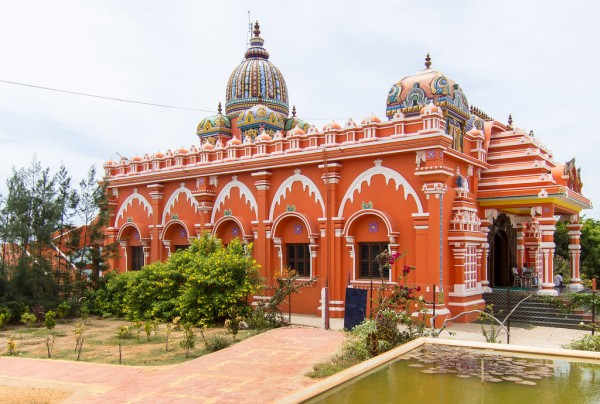
In a battle that follows, Rama, accompanied by Lakshmana and the Vanara Sena, vanquishes the ten- headed Ravana to the great relief of everyone. And, how all these happened within the time requested by Sita to rescue her is brought out beautifully by sage Valmiki in his epic. With the battle over, Rama, accompanied by Sita, Lakshmana and the army, returns to the shores of what is Rameswaram now.
Here, as advised by Rishis, Rama decides to consecrate a shrine for Shiva to wash off the Brahmahatti dosha – the sin of killing Ravana, a Brahmin and great grandson of Brahma. A time for the auspicious ceremony is fixed. Rama rushes Hanuman to Mount Kailas to fetch a Linga. As the auspicious time for the installation has neared, but since Hanuman has still not reached, Sita makes a Linga out of sand and the puja is performed within the stipulated time. It is consecrated as Ramalinga. Meanwhile, Hanuman returns from Shiva’s abode with two Lingas. He is disappointedRameswaram that the ceremony is already over. In anger, he tries to uproot the sand Linga with his tail, but in vain. Rama pacifies Hanuman and installs a Linga brought by Hanuman from Kailas to the left of Ramalinga, and ordered that all pujas be first performed for this Linga, called Vishwalinga. This priority in puja is followed even today. Rama then performs abhisheka with holy water from the Ganga. He aims an arrow at a point to create a spring and takes the purifacatory bath. This is the much-revered Kodi Theertha, situated in the first corridor of the Rameswaram temple.
This holy Theertha and several other sacred waters, mostly in the form of wells within the temple precincts in Rameswaram thus have a special sanctity attached to them with the touch of Rama’s holy feet.
The people of Rameswaram consider it sacrilegious to plough the land or use heavy stone crushers to produce oil since Sita made Ramalinga out of earth.
How to Reach
By Air: The holy land of Rameshwaram is well connected to other major cities of India. The nearest airport is at Madurai, about 163 kilometers away. This connects you to all the major cities of India. After you get down, you can have both public and private transport to take you to Rameshwaram.
By Rail/Train: Rameshwaram is connected by rail with Chennai, Madurai, Coimbatore, Trichy, Thanjavur and other important cities. The two kilometers stretch of Indira Gandhi Bridge connects the island of Rameshwaram to the mainland of Mandapan.
By Road: The city is well connected to Madurai, Kanyakumari, Chennai and Trichy. It is also connected to Pondicherry Rameswaramand Thanjavur via Madurai. Local Transportation While traveling within the township, you may hire jeeps, auto rickshaws and even cycle rickshaw.
Monument
Rameswaram is one of the main fishing centres of Tamil Nadu. Variety of fishes including export quality fish like prawns, sea cucumber, lobster etc. are available, Rameswaram is also famous for its dry fish.
According to Hindu Mithology, if one will visit Rameswaram and pray Lord Shiva means, the whole sins will be relieved from the body.
The Ramanathaswamy temple is renowned for its magnificent corridors and massive sculptured pillars. The third corridor of Ramanathaswamy temple is the longest one in the world.
Besides pilgrimage, Rameswaram Island has several places which ideally suites for picnic programmes. There are beautiful beaches at Olaikuda, Dhanushkodi and Pamban. Olaikuda beach (km) from the main temple is engulfed by coral reefs which makes sea bathing safe and enjoyable. With diving glasses and respiration tubes, Scuba diving can be done safely. Australian Flamingos, Sea Gulls and variety of birds migrates to Rameswaram Island during winter.
Rameswaram, a small island in the Gulf of Mannar, is a major pilgrim centre .It is connected to the mainland by road and rail bridges. Rameswaram is holy, because Sri Rama, on his return from Sri Lanka, offered his thanks to Lord Shiva and performed pooja to wash away his sins which he got by killing Demon King, Ravana.
Rameswaram is known for its theerthas (wells) in and around the main temple. This place is equally sacred to both Vaishnavites and Saivites.
Annai Indira Gandhi Road Bridge (12 kms) Also known as Pamban Bridge which connects the Rameswaram island with the main land. It is the longest Sea bridge in India lengths nearly 2.2 kms and stands as a fine examples for IndianRameswaram architecture. The bridge was constructed with sufficient elevation and a beautiful scenery of the sea, adjoining Islands and parallel rail bridge below can be viewed from the bridge.
Kodandaramar Temple (10 kms) Kodandaramar Temple, on the way Dhanushkodi, is considered to be the place where Sri Rama performed the cornation for Vibhishana, Younger brother of Demon King, Ravana after he sought asylum . The idols of Rama with bow & arrow along with Sita, Lakshmana, Vibhishana and Hanuman is worthseeing and delightful to watch.
Nambu Nayagi Amman Temple It is a temple of high regard for the people of Ramnad District, situated at 8 kms from Rameswaram main temple on the way to Dhanushkodi.
Five Faced Hanuman Temple Situated 2 kms from the main temple, the deity of Hanuman brought with sendooram. Idols of Ram, Sita and Hanuman brought form Dhanushkodi during 1964 cyclone was taken place here. Floating stone, used to built Sethu Bandanam (Bridge between India and Lanka) in this temple was Worth seeing.
Sri. Ramanathaswamy Temple Sri Ramanathaswamy temple which is situated near to the sea on the eastern side of the island is renowned for its magnificient corridors with massive sculptured pollars lining it. The corridor is the longest in the world. It is 197 metres long (East – West) and 133 metres wide (South-North). The temple has storey tower (Gopuram), 38.4 high. The temple as it stands today was built by different rulers at different periods from the 12th century AD. Pooja is being performed to Spadikalingam (Mani Dharshan) which was given by the Saint Sankarachrya to this temple, for an hour early morning daily.

Jadayu Theertham It is in the south side of Rameswaram when Ravana Kidnapped Sita , Jadayu (King of Birds) fought with Ravana to save Sita from him .But his wings cut off and fell down in this place. There is a temple and a pond surrounded by seven sand dunes at this place. The pond water is very tasty like a tender cocunut and it is like a oasis in desert . Maamangam festival is being celebrated here, once in 12 years, at this theertham.
Rameswaram Agni Theertham Sri Ramanathaswamy temple faces east. The seashore, about 100 metres from the main entrance of the temple, is very calm and therfore ideal for bathing.The water at this place is considered sacred and known as ‘Agni Theertham’. Pillgrims perform poojas for their ancestors at this seashore.
Gandamadana Parvatham (Hillock 3kms) It is situated on the highest point in the island. Here, the imprint of Lord Rama’s feet (padham), is placed on chakra,
Sukreevar Temple/ Theertham Situated on the way to Gandamadana Parvatham near Doordarshan Kendra. Satchi Hanuman Temple Considered to be the place where Hanuman delivered the good news of finding Sita to Rama with a Satchi (evidence), Chootamani (jewel) of Sita. Situated 3 kms from the main temple, on the way to Gandamadana Parvatham.
So, pack your bags and break the barriers because this is INDIA. Also, read some of the best blogs like Best Tours of India and Travel to India from the USA. Please also read some of our blogs like Travel Check List for India , Best Indian Snacks and Best Hotels in Rajasthan.

